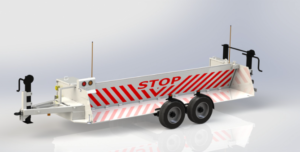Your neck and back are two of the essential parts of your body, so it’s no surprise that they suffer from injury. Neck pain is one of the most common complaints doctors hear about in their offices, while low back pain is one of the leading causes of disability worldwide. If you’ve been suffering from these conditions, there are three potential causes that you should be aware of:
Generalized Joint Degeneration (Overuse)
When you use your joints over and over, they start to break down. This is referred to as generalized joint degeneration. Generalized joint degeneration is a common cause of neck and back pain. It is because the wear-and-tear injury may affect the spine’s many joints.
If you’ve been experiencing neck or back pain for more than six weeks, then joint degeneration from repetitive motions like driving or sitting at the computer all day long could be the cause. The good news is that there are ways to prevent general joint degeneration before it starts causing pain.
Stretching exercises, ergonomic adjustments in your workstation, taking breaks with gentle movement throughout the day, even just walking around can help. If pain is already an issue, physical therapy and anti-inflammatory medications can help control the brutal pain. You can also make an appointment to see a doctor specializing in neck pain treatment or back pain.
Disc Herniation
When the cartilaginous discs in your back rub together, they cause friction and pressure. This pressure can eventually push the softer inner part of the disc through its firm outside layer, leading to a “slipped” or protruding disc. They refer to the condition as disc herniation.
Disc herniation is one of the most common reasons that people get neck pain. Those who suffer from them might find that their head tilts to one side due to nerve impingement caused by pinched nerves. Some may also have weakness on one side of their body since specific muscles control only one side of movement (unilateral).
It is not known why discs herniated, but it can be due to a variety of factors. Some people may pressure their spine through sudden movements, such as lifting and rotating their torso too quickly. As the disease progresses towards definite stages, neck pain radiates to the shoulders and arms.
Neck pain is usually associated with nerve impingement, especially when pinched nerves are in the thoracic spine (upper region).
Tumors
Specific cervical abnormalities can cause neck pain, such as metastatic cancer of the head and neck due to bone or tumor invasion (through the vertebral bodies). Cancerous tumors in your neck are often caused by some malignant tumor that has been elsewhere in your body and spread there.
Tumors can also be benign; if they grow so large that they press against nearby nerves, then you may start feeling pain. For this reason, a medical professional should check any growing mass to make sure there isn’t something dangerous happening behind the scenes.
Vertebral Osteomyelitis (Osteoarthritis)
Vertebral osteomyelitis can cause neck pain. The initial causes of this condition vary. However, bacterial infections are common triggers for the disease. In most cases, bacteria entering through the bloodstream or lymphatic system may be the cause.
However, sometimes it develops after certain surgeries or traumatic injuries. When these germs travel to your bones, they create soft spots on them and start spreading along the vertebrae towards your spinal cord.
These micro-lesions in your spine harm the nerve roots that flow to and from your brain. This causes excruciating pain in your neck and weakness in your arms, legs, and face. Osteomyelitis may also cause cloudy eyes or blindness in some cases.
Cervical Spondylosis
Cervical spondylosis refers to degenerative alterations in the spine that affect the intervertebral discs, facet joints, ligaments, and adjacent vertebrae’s articulating processes (walls). Spondylosis is an inflammation of the bones in your spinal column that results from bone degradation due to aging, trauma, or disease.
It is characterized by degenerative changes found in bone tissue caused by repetitive stress on that area. The discs between the vertebral bodies become less flexible with age, which causes the bones to rub together regularly.
The result is damage to your intervertebral disc, which decreases the height of the vertebrae and creates a condition known as spondylolisthesis. Spondylosis of the cervical spine starts from C1, C2 segments and goes up to C7.
Closing Remarks
Various things such as; sudden movements or tumors can cause neck and back pain. The last two causes of neck pain are familiar to older adults. However, one should always seek medical attention if one suspects something is wrong.

